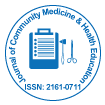हमारा समूह 1000 से अधिक वैज्ञानिक सोसायटी के सहयोग से हर साल संयुक्त राज्य अमेरिका, यूरोप और एशिया में 3000+ वैश्विक सम्मेलन श्रृंखला कार्यक्रम आयोजित करता है और 700+ ओपन एक्सेस जर्नल प्रकाशित करता है जिसमें 50000 से अधिक प्रतिष्ठित व्यक्तित्व, प्रतिष्ठित वैज्ञानिक संपादकीय बोर्ड के सदस्यों के रूप में शामिल होते हैं।
ओपन एक्सेस जर्नल्स को अधिक पाठक और उद्धरण मिल रहे हैं
700 जर्नल और 15,000,000 पाठक प्रत्येक जर्नल को 25,000+ पाठक मिल रहे हैं
में अनुक्रमित
- सूचकांक कॉपरनिकस
- गूगल ज्ञानी
- शेरपा रोमियो
- जेनेमिक्स जर्नलसीक
- सेफ्टीलिट
- RefSeek
- हमदर्द विश्वविद्यालय
- ईबीएससीओ एज़
- ओसीएलसी- वर्ल्डकैट
- पबलोन्स
- चिकित्सा शिक्षा और अनुसंधान के लिए जिनेवा फाउंडेशन
- यूरो पब
- आईसीएमजेई
उपयोगी कड़ियां
एक्सेस जर्नल खोलें
इस पृष्ठ को साझा करें
अमूर्त
Complementary Feeding Practice and Associated Factors among Mothers of Children 6-23 Months of Age in Dejene District, Northwest, Ethiopia 2015
Bezie WW, Aredo KK
Background: Infant and child feeding practices are the major determinants of nutritional status. The period of complementary feeding is the time of peak incidence of growth faltering, micronutrient deficiencies and infectious illnesses. The aim this study was to assess timely initiation complementary feeding and associated factors of mothers of children 6-23 months of age in Dejen District, Northwest Ethiopia 2015.
Methods: Community based cross-sectional study design was adopted on 558 mothers who randomly selected from eight kebeles based on population proportion. The data was collected using pretested structured questionnaire through face-to-face interview in July 2015. The collected data was entered and analyzed in to SPSS windows version 20.0. The analysis part contains descriptive and inferential statistics. Bivariate and multiple variable logistic regression analysis computed. A P-value <0.05 was considered to declare a result as statistically significant in this study.
Result: Out of 558 respondents, 380(68.1%) in 20-34 years age range and 312(55.9%) children in 12-23 months range of age. More than half of 209(52%) respondents were started complementary feeding timely. Use minimum dietary diversity and minimum meal frequency were 42.1% and 45.7% respectively. In multivariate analysis, respondents’ higher level of awareness (AOR=3.08; 95%CI: 1.93-4.90), getting information from health care providers (AOR=2.82; 95%Cl: 1.23-6.45), less frequently feeding (AOR=20%; 95%CI: 0.007-0.054) and minimum diet diversity (AOR=14%; 95%CI: 0.05-0.35) were associated with timely introducing complementary feeding. Reasons for not early initiation for complementary feeding was 447(80.1%) lack of knowledge, 39(7%) perceived insufficient breast milk production, working outdoor activities and 10(1.8%) child’s illness.
Conclusion: The proportions of mothers who initiate timely complimentary feeding, acceptable meal frequency, and dietary diversity were found to be low. Level of awareness, getting information, less frequently feeding and minimum diet diversity were associated variables. Maternal health care utilization and health information should be strengthening to all expectant mothers.
विषयानुसार पत्रिकाएँ
- अंक शास्त्र
- अभियांत्रिकी
- आनुवंशिकी एवं आण्विक जीवविज्ञान
- इम्यूनोलॉजी और माइक्रोबायोलॉजी
- औषधि विज्ञान
- कंप्यूटर विज्ञान
- कृषि और जलकृषि
- केमिकल इंजीनियरिंग
- चिकित्सीय विज्ञान
- जीव रसायन
- नर्सिंग एवं स्वास्थ्य देखभाल
- नैदानिक विज्ञान
- नैनो
- पदार्थ विज्ञान
- पर्यावरण विज्ञान
- पशु चिकित्सा विज्ञान
- पादप विज्ञान
- बायोमेडिकल साइंसेज
- भूविज्ञान और पृथ्वी विज्ञान
- भोजन एवं पोषण
- भौतिक विज्ञान
- रसायन विज्ञान
- व्यवसाय प्रबंधन
- सामाजिक एवं राजनीतिक विज्ञान
- सामान्य विज्ञान
- सूचना विज्ञान
क्लिनिकल एवं मेडिकल जर्नल
- आणविक जीव विज्ञान
- आनुवंशिकी
- इम्मुनोलोगि
- एनेस्थिसियोलॉजी
- कार्डियलजी
- कीटाणु-विज्ञान
- कैंसर विज्ञान
- गैस्ट्रोएंटरोलॉजी
- ज़हरज्ञान
- तंत्रिका-विज्ञान
- त्वचा विज्ञान
- दंत चिकित्सा
- दवा
- नर्सिंग
- नेत्र विज्ञान
- नेफ्रोलॉजी
- नैदानिक अनुसंधान
- पल्मोनोलॉजी
- प्रजनन चिकित्सा
- बच्चों की दवा करने की विद्या
- भौतिक चिकित्सा एवं पुनर्वास
- मधुमेह और एंडोक्राइनोलॉजी
- मनश्चिकित्सा
- रुधिर
- रेडियोलोजी
- शल्य चिकित्सा
- संक्रामक रोग
- स्वास्थ्य देखभाल
- हड्डी रोग

 English
English  Spanish
Spanish  Chinese
Chinese  Russian
Russian  German
German  French
French  Japanese
Japanese  Portuguese
Portuguese  Telugu
Telugu